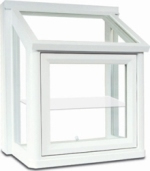
Figure 2 - Garden window has extra window glass in order to provide additional visible light
Another example is where homeowners have a garden window, as shown in Figure 2, and would like to have as much visible light as possible on their plants.
Some window glass construction has advantages in geographic areas where heating is of prime concern while others have advantages when cooling is the primary energy expense.
As an example: In climates where heating is the primary concern, solar heat gain can save on energy costs. In climates where cooling is the primary concern, solar heat gain can be a major expense.
Window Design |
Description |
Solar Heat Gain Transmitted (SGHC) |
Visible Light Transmitted (VT) |
 |
Single pane of clear window glass |
86% |
90% |
 |
Single pane of window glass with a bronze or silver tint |
73% |
68% |
 |
Double panes of clear window glass |
76% |
81% |
 |
Double panes of window glass with a bronze or silver tint |
63% |
61% |
 |
Double panes of window glass with a high performance tint |
51% |
69% |
 |
Double panes of window glass with high solar gain - Low-E and Argon or other inert gas. |
71% |
75% |
 |
Double panes of window glass with medium solar gain - Low-E and Argon or other inert gas. |
58% |
78% |
 |
Double panes of window glass with low solar gain - Low-E and Argon or other inert gas. |
39% |
71% |
 |
Triple panes of window glass with high solar gain - Low-E and Argon or other inert gas. |
51% |
65% |
 |
Triple panes of window glass with low solar gain - Low-E and Argon or other inert gas. |
33% |
56% |
